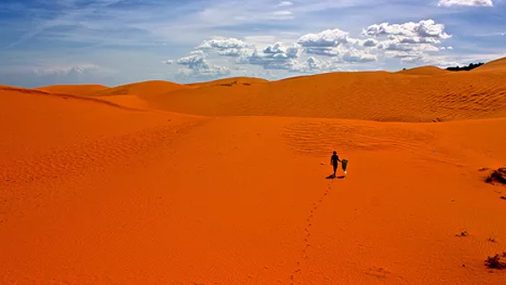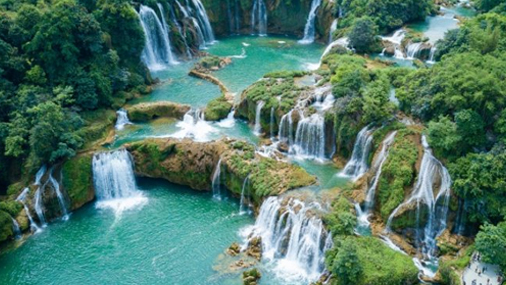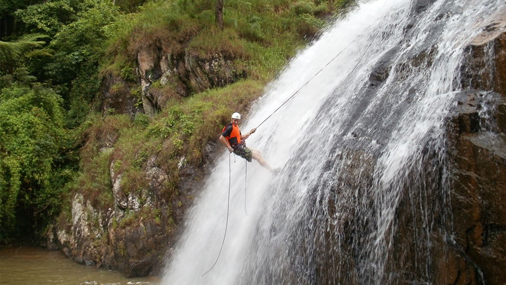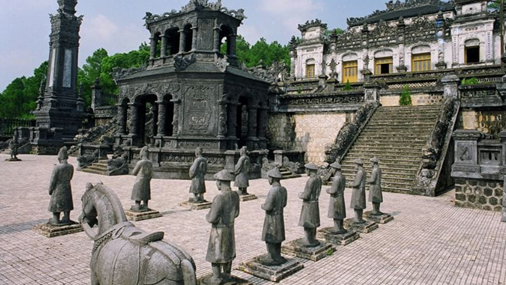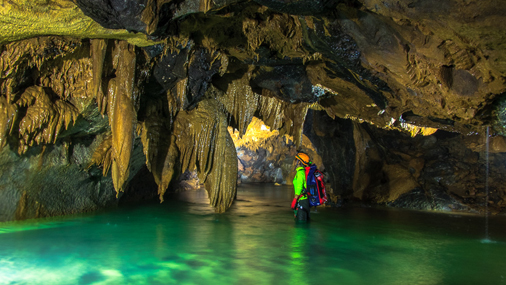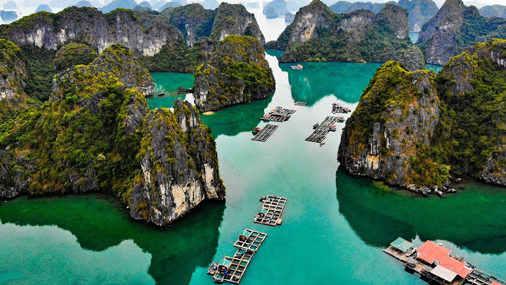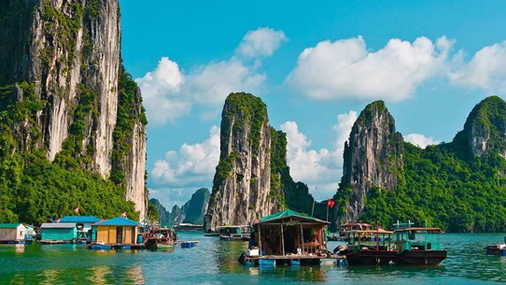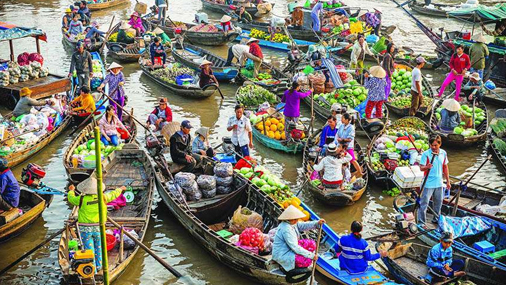1. What is the best season to visit Vietnam?
There is no discernible "off-season" in Vietnam. Thus visitors can visit at any period. The greatest spots to go to the beach change year round depending on the weather. The rainy season usually lasts from May to September. However, most sites are still accessible to tourists. During the chilly and dry winter months of November through April, typical temperatures in the northern parts vary from 17-22 C (62-71 F), with temperatures as low as 10 C in the far north mountain areas. In the south, temperature varies from 25 to 35 degrees Celsius (77 to 95 degrees Fahrenheit) throughout the year, with only minor differences between dry and wet seasons (which runs from May to November).
2. What kind of lodgings are available?
We try to use beautiful hotels that are owned by the natives and distinctive of the area in each destination. These include everything from modest family-run bed and breakfasts to opulent luxury hotels. Except where otherwise specified, such as a homestay or village hiking excursion, most lodgings feature personal baths, hot water, and clean, pleasant rooms. We also look for hotels in nice spots, whether they are close to major attractions or outside of town if the city is usually noisy. In metropolitan locations, larger accommodations are used since they are often the only alternatives.
3. Do I require an electrical converter/adapter?
Electricity in Vietnam is typically 220 volts and 50 Hz. They employ power outlets of kinds A, C, and G. It is advised that you carry an adapter or buy one when you arrive. Any device you bring will almost certainly require one to modify the plug form. Although some hotels offer adapters, you should carry your spare.
4. Do you provide meals?
The majority of meals are included for both you and your tour expert. Because you'll need help interpreting the menus, the tour expert will usually eat with you unless you specify otherwise. Meals will sometimes be up to you, especially if you are in a bigger city with a multitude of tourist-friendly restaurants. For those meals when you're on your own, your guide is pleased to make restaurant suggestions.
5. How do the tour operators treat you?
Our tour guides are outstanding! They can communicate in English and Vietnamese, and some can even communicate in ethnic minority languages. Our tour guides all have the Vietnam Tourism Authority's guide qualification, which is necessary to lead excursions. They're also all First Aid certified. Many of them were bred and nurtured in the communities where they guide, and they are among the top guides in each region. Some also specialize in particular exciting activities, such as hiking. All of our tour guides treat our tourists as friends, guiding them to both the major sights and the hidden gems of the area.
6. What mode of travel is employed?
Personal vans/cars, domestic flights, yachts, trains, and other methods of travel are used on our Vietnam excursions. We combine personal and public transportation to deliver the safest and most efficient transportation in each area. For short intervals, we may add non-traditional methods of travel (tuk-tuk, bicycle, kayak, speedboat, etc.) to give travelers a taste of the local culture. The transportation provided on each tour is described on the tour schedule page. Just inquire if you have any further queries!
7. What is traditional Vietnamese cuisine?
Vietnamese meal is highly diverse, having been influenced by many different cultures throughout the years, resulting in an unusual blend of cooking techniques and products. The north's heavy Chinese influence has resulted in a wide range of stir fries and wok-based meals. Grilled and fresh vegetables with sauces are more prevalent in the south, where a wider wide range of foods are cultivated. The recent arrival of the French has resulted in the assimilation of French cuisine influence, which is widely credited with the popularity of pho noodle soup. The majority of meals feature rice and fish sauce, which is a popular condiment used in practically every dish in the nation.
8. Are these excursions appropriate for children?
Yes! Many Vietnam excursions are suitable for families or can be altered and tailored to suit a range of preferences and ages. Some itineraries reduce travel and driving times while maximizing in-country activities to keep youthful imaginations occupied. In this case, your Tour Organizer can assist you.
9. What is the average age group on Vietnam trips?
The average age range is 25 to 65, but on our excursions, we've encountered youngsters as little as 6 and the "young at heart" as elderly as 90!
10. Would these tours be suitable for solitary tourists?
Absolutely! Our Vietnam excursions attract a diverse group of people, including lone travellers, families, and friends. So long as your dates and finances allow it, we can often match you up with another group traveling on one of the planned tours or one with a more customized spin. Take a peek at our exclusive Solo Traveller Departures for single travellers.
11. Are international airlines included in the package price?
International airlines are not included in the tour price. We find that booking these independently is usually cheaper for travellers, and it also gives you the freedom to choose the timetable and arrangement that is most suitable for you. You can book international tickets on your own, or we can assist you with finding an airfare consolidator that focuses on international routes.
12. How do I travel from the flight terminal to the accommodation when I get there?
At your arrival airport, a driver will be waiting for you with a placard bearing your family name or surname. On the first night, he will drive you to your lodging. You can arrange your own taxi transfer; however, we do not recommend it. Many taxi drivers are unable to communicate in English. If you take a taxi, be mindful of the meter because cab drivers have a switch they can press to increase the fare.
13. Are there any special offers?
Definitely! Year round, we provide special discounts on specific trips. For the most up-to-date deals and continuous discounts, visit our Travel Discounts page.
14. How much money should I set aside for tips?
On every one of our trips, tips are not necessary. It is usual, however, to leave a small gratuity for exemplary performance. For a full day trip, we suggest paying your guide $8-$10 per day and a driver $4-$5 per day. Others choose to carry modest presents from residence to hand out to service personnel along the road.
15. How far in preparation should I make my reservation?’
Your Vietnam trip can be booked at any moment, but the sooner you book, the better. Travelers travelling during the height of the high season should book ahead (3 months or more suggested, 6 months for peak season dates) to ensure that their first choice of hotels & resorts is still available. Furthermore, we normally advise you to reserve your foreign flights once your itinerary has been verified. You will be able to reap the benefits of flight offers as they become accessible the sooner we schedule your journey. We can often accept last-minute tourists (some even leave in less than a week!!), so please contact us, and we'll do our best to assist! It is essential to be adaptable and prepared while making last-minute reservations. Your first pick hotel may not be accessible during your chosen dates, but your travel planner can suggest some related alternatives that are just as intriguing!
16. Are the trip dates negotiable?
Absolutely. If you are unable to fly on the stated departure dates given online, simply notify us. As long as accommodations and a tour assistant are present, most excursions can be arranged on other departure dates for at least two visitors.
17. Is it possible to prolong or adjust my stay?
Yeah! Call us for recommendations in the area. Extensions to other Southeast Asian locations, such as Cambodia, Thailand, or Laos, are simple to arrange. Let us understand how you'd like to tailor your vacation, and we'll do our best to make it happen.
18. What should I bring with me?
After you register for your trip, you will get a thorough checklist. It's tough to make broad generalizations about climate because it varies by place and season. For any of our Vietnam trips, relaxation is the rule, and special attire is not required.
19. Is Vietnam a peaceful country?
Both in remote areas and in the major cities, Vietnam is a generally safe nation. Travelers should always be cautious of their environment and use caution while going out late at night, but violence rates in general, especially against visitors, are relatively low. Thieves are the most typical problem encountered when visiting busy marketplaces or retail centers. Keep your valuables covered beneath your top layer of clothing to protect your property. Also, be careful of metering tactics used by taxi drivers to deceive visitors.
20. Is it okay to drink the water?
Anywhere in Vietnam, tap flow is usually unsafe to drink. Mineral water is widely accessible at tourist attractions, hotels, and cafés, and heated water (boiled to ensure safety) or tea is frequently served with meals. For added protection, travellers should clean their teeth using mineral water.
21. Can I pay in US dollars, or do I have to pay in domestic currency? What are the country's currency, exchange rate, and other relevant information?
Outside of the major cities, most businesses in Vietnam do not take USD. In Vietnam, the Vietnamese Dong (VND) is the only currency accepted. You should convert your cash at a bank when you arrive. The rate of exchange at airlines and lodgings is typically worse. For most up-to-date conversion rates, use a currency converter like http://www.oanda.com/currency/converter/.
22. Is it better to carry cash or travellers’ cheques? Are there any ATMs? Can I pay with a credit card?
In major cities, credit and debit cards are routinely recognized, although traveller’s cheques are not. Travel to more remote places necessitates cash, which can be easily accessed from ATMs in major towns.
23. Is it okay if I use my mobile phone?
Yes, provided your phone hasn't been blocked by your operator, and you can use their service. To check out if your phone will work correctly, call your phone provider. If you have an unrestricted phone, you can also purchase a Vietnamese SIM card after you are in Vietnam. It's also a good idea to double-check your service provider's international calling prices.
24. Do I require a visa or passport?
A Vietnam visa is required for US nationals, although they do not need to submit it beforehand. However, this is an alternative. For US nationals, a visa on arrival option is also available, but you must first receive a Welcome Letter, which can only be obtained at the HCMC or Hanoi airports. Travelers to Vietnam are not allowed to board a plane without either a visa or an invitation letter saying that a visa will be issued upon entry. For a modest fee, Adventure Life can write that letter for you, so please ask your Journey Organizer if you require one. Passengers must have a passport that is valid for at least 6 months after their departure date. For admission requirements, non-US nationals should notify their native consulate.
25. What vaccinations are suggested or needed?
There are presently no vaccination requirements for entering Vietnam. If you are traveling from a country where yellow fever is a concern, you must have a yellow fever vaccination.
This 10-year immunization must be given at least 10 days prior to your arrival in a yellow fever-risk area. As evidence of vaccination, travelers must present their International Certificate of Vaccination or Prophylaxis (ICVP). Typhoid and Hepatitis A vaccines are suggested. Preventatives for Hepatitis B, Japanese Encephalitis, Malaria, and Rabies are also suggested, depending on where you plan to vacation in Vietnam. Please consult your doctor and/or visit the Center for Disease Control's website for the most up-to-date details.
26. What local time does Vietnam operate in?
The Indochina Time Zone, or UTC+07:00, is used in Vietnam.
27. Is it necessary to purchase travel insurance?
Wonderful!!! We collaborate with an insurance coverage business that offers low-cost coverage for trip termination, medical bills, medical assistance, and lost luggage, among other things.



 For international travellers, Vietnam has decided to suspend visa requirements.
For international travellers, Vietnam has decided to suspend visa requirements.


